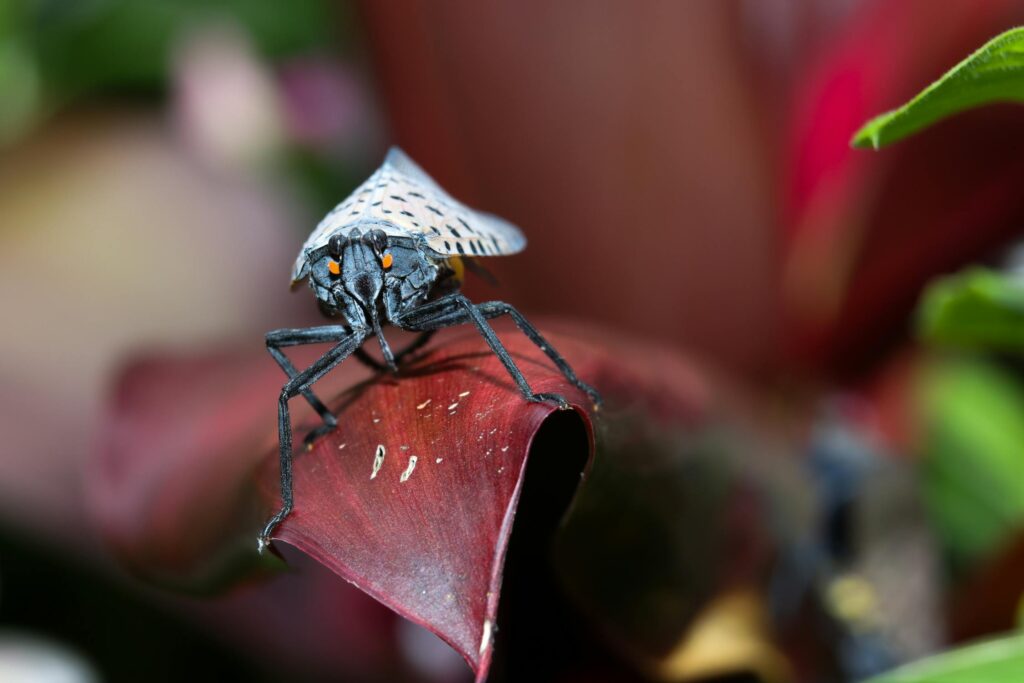Thou Shall Not Kill – Unless It’s a Spotted Lanternfly

The Most Wanted Pest in America
In the world of invasive species, there’s one flashy troublemaker that’s earned itself a government-sanctioned death warrant: the spotted lanternfly (Lycorma delicatula). With its deceptively beautiful wings and voracious appetite, this Asian native has become Public Enemy No. 1 in the agricultural community.
A Stylish Menace’s Origin Story
First detected in Berks County, Pennsylvania, in 2014, the spotted lanternfly arrived in America like many uninvited guests – through international shipping. A single egg mass, no larger than a smear of mud, hitched a ride on imported stone, unleashing what would become one of the most aggressive invasive species campaigns in recent history.
Why Everyone’s Gone Bug Bounty Hunter
The spotted lanternfly costs the Pennsylvania economy alone an estimated $324 million annually. If uncontrolled, it could cause nationwide agricultural damages exceeding $18 billion.
This fashionable pest doesn’t discriminate in its destruction:
- Decimates grape vineyards (causing up to 90% crop loss)
- Attacks valuable hardwood trees
- Destroys fruit orchards
- Threatens the beer industry by damaging hops
The “Hitchhiker’s Guide” to Invasion
These insects are master stowaways, spreading across states through:
- Railroad cars
- Shipping containers
- Personal vehicles
- Outdoor furniture

What Does This Fashion Victim Look Like?
Adult spotted lanternflies are hard to miss:
- One-inch long body
- Gray forewings with black spots
- Hindwings with patches of red and black
- When flying, they flash a brilliant crimson underwing
The Government’s Most Wanted List
Official State Department of Agriculture Directive: If you see it, kill it. No questions asked.
Current quarantine zones include:
- All of Pennsylvania
- Parts of New Jersey
- Sections of New York
- Areas of Connecticut
- Regions of Maryland
- Parts of Delaware
- Select counties in Virginia
The Official Execution Playbook
If you encounter a spotted lanternfly, here are your government-approved elimination methods:
- Squash on sight (The most direct approach)
- Spray with EPA-approved insecticides
- Remove egg masses by scraping them into alcohol or hand sanitizer
- Set up sticky bands around tree trunks
Citizen Science in Action
The battle against the spotted lanternfly has become one of the largest citizen science initiatives in recent history. Here’s what the numbers tell us:
- Over 800,000 reported sightings since 2014
- More than 200,000 citizens actively reporting sightings
- 47% reduction in populations where aggressive control measures are implemented
The Environmental Detective Work
Scientists have discovered these fascinating (and troubling) behaviors:
- They excrete a substance called honeydew that promotes toxic mold growth
- One female can lay up to 200 eggs per season
- They have no natural predators in North America
- They can survive temperatures as low as -20°F
What’s At Stake
The spotted lanternfly threatens:
- $325 million in Pennsylvania’s economy annually
- $70 billion in national forest products
- $18 billion in potential agricultural losses
- 40,000 jobs in farming and forest industries
The Future of the Fight
Researchers are exploring several promising control methods:
- Natural fungal pathogens that target the species
- Specialized trap designs
- Genetic control methods
- Enhanced quarantine protocols
Report sightings to your state’s Department of Agriculture or use the reporting tools available on their websites. Your vigilance could save millions in agricultural damages and protect vital ecosystems.



